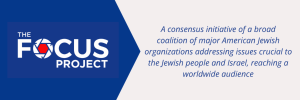
This commemorative edition of the one-year anniversary of the Oct. 7 massacre is being posted in lieu of this week’s regular Tuesday edition.
![]()
BACKGROUND – TALKING POINTS – ACTIONS – STORIES MAKING NEWS
![]()

Hearts pounded with fear as sirens blared, rocket interceptions boomed across the sky as men, women and children ran for safety to nearby bomb shelters on the Jewish holiday of Simchat Torah, October 7, 2023. A storm of 3,000 rockets were fired into Israel creating a cover of distraction as several thousand Iran-backed Hamas terrorists rammed through walls and barricades, breaking through Israel’s border – launching an unprovoked attack – to hunt, murder and kidnap Israelis wherever they could find them. Hundreds of innocent Israeli and foreign civilians were beaten, raped, murdered or kidnapped at the Nova Music Festival.
A few miles away, hundreds of Israelis in communities near Gaza’s border – from babies to the elderly – were tortured, mutilated, beheaded, raped, murdered and some even burned alive. News of the gruesome Hamas attacks and the scale of their horror swept across Israel – adding severe psychological trauma to the intensity of the physical attacks. Family members received panicked texts from loved ones being dragged from their homes and kidnapped by Hamas, which often became their last words. That traumatic day burned deep scars into the memories of families, friends and the entire nation, that time can never erase.
A year later, nearly 100 hostages remain in captivity in Gaza, with half presumed alive. Israeli Defense Forces continue to battle Hamas terrorists, who now are waging a guerilla war as their forces have been decimated. Following a year of continual rocket barrages from the Iran-backed Hezbollah terror group in Lebanon – forcing the evacuation of Israeli citizens from the northern border – the IDF launched military action by air and ground to push Hezbollah forces north, away from Israel’s border. Thousands of innocent civilians have been caught in the crossfire. Iran recently launched its second missile barrage against Israel in the past year, risking regional war.
On the one-year anniversary of the 10/7 massacre, we solemnly remember those who were injured, murdered, kidnapped and those still held in Hamas captivity. We are thankful for those who survived or were rescued and grateful to the many heroes and first responders who made that possible. We also stand with the bereaved families of the victims, including those of the hundreds of soldiers in the IDF who lost their lives fighting heroically against the terror regimes that still threaten the safety of Israel and its citizens.
After a year at war, Israel still carries the collective trauma of 10/7, with many re-living it daily as they painfully wait for proof of life, and ultimately, the release of their captive loved ones in Gaza who they have not seen in 12 months. Hostages still held by Hamas have endured an entire year of torture, malnourishment, abuse, rape, neglect and psychological torment. The Red Cross has never visited the hostages held in Gaza – not once – to evaluate their health, administer vital medications, treat wounds or even to know who remains alive.
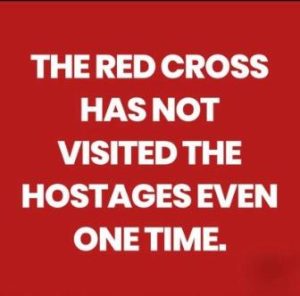
12 Months Later: Ripples of Impact on Israelis Continue
Over this past year, Israel has been in a constant war, with rockets being launched from both Hamas in the South and the other Iran-backed terror group, Hezbollah, in the North. Currently, 870 orphaned children have lost one parent since the war started, with an additional 23 who have lost two parents. The psychological long-term impact comes with a devastating prognosis. These young victims of the trauma of 10/7 must grow up carrying an indescribable pain.
In addition to fire drills, Israeli schools must have “mamad drills” where children practice finding and entering a bomb shelter within a specific time frame for that region. A study by the Israeli Pediatric Association reports that 83% of Israeli children suffer from emotional distress since October 7.
The war continues and Hamas leader, Yahya Sinwar, remains hidden in the labyrinth of tunnels the terror group has built since Israel withdrew from Gaza in 2005. Untold amounts of funding intended for Palestinian civilians was diverted by the terrorists to build a highly sophisticated infrastructure that it used to build bombs, store smuggled munitions and prepare for not only acts of terror, but a full-scale attack on Israel.
Impact: Desolate Israeli Communities
The communities along Israel’s northern border have been battered by Hezbollah rockets since Oct. 8, leaving more than 60,000 citizens without a place to call home. A year later, Kfar Aza and Nir Oz, some of the hardest hit communities near Gaza on 10/7, are still mostly empty with businesses boarded up. Bullet holes and blood-stained walls remain as a haunting reminder of where once whole and happy families lived. Many children fear the nights as times when nightmares and flashbacks of Oct. 7 – the screams, the murders and the abductions of their family members – bring the horrors of their past into the present – locking survivors in a state of trauma.
Impact: Nova Survivors
Young people who survived the Nova Festival recount harrowing accounts of running, hiding in bushes, and miraculously escaping as terrorist gunfire sped past them. Rami Davidian, who saved 750 lives and Oz Davidian, who rescued more than 100, made more than a dozen life-endangering trips back to the Nova massacre site to rescue as many as possible, often confronting terrorists face to face, dodging terrorist bullets and flaming cars.
The trauma from 10/7 lingers, affecting daily life for Israelis. One Nova survivor recounted, “I participated in a study that monitored my pulse and other parameters and revealed how bad my health is. I sleep on average two hours a night. Each morning at seven o’clock, I relive the moments when I was hidden in the bushes with terrorists passing by me. I can no longer move on my own, I need to be constantly accompanied.”
What was once a beautiful open field where thousands danced now looks like a cemetery with vigils and flowers marking where the bodies of victims once laid. The Nova festival is a memorial site marked with hundreds of photos of the victims and hostages kidnapped on 10/7. Thousands of Israeli citizens and international visitors solemnly walk through the area daily.
A special retreat recently brought together 180 survivors from the Nova massacre at a Jerusalem hotel to observe Shabbat, the Jewish Sabbath. A group of relatives of Israeli hostages also attended. Following the Friday night dinner, they gathered to draw comfort and strength, to share their stories of survival and remember their friends who were taken or murdered.
One retreat participant shared, “People are asking what it means to be Jewish. They understand now that it doesn’t matter what your background is, the Sinwars and the Nasrallahs don’t differentiate between us,” she said, referring to the Hamas chief in Gaza. “They hate us because we’re Jewish.”
Impact: Soldiers and their Families
Soldiers who return home on a short leave, struggle through their PTSD and try to re-connect to normal civilian life. All the while, scenes of watching their comrades being killed in Gaza or Lebanon still flash in their minds. Overwhelmed and alone, wives of IDF soldiers juggle the responsibilities of work, running their homes and raising their children as single parents, all while anxiously awaiting updates on the safety of their husbands, or their children, who are serving.
Many parents have buried their teenage and young adult soldiers. Wives have mourned the loss of their fallen husbands and children have eulogized their heroic fathers who will never come home. For many of these children the question of “when is Daddy coming home?” will never be answered.
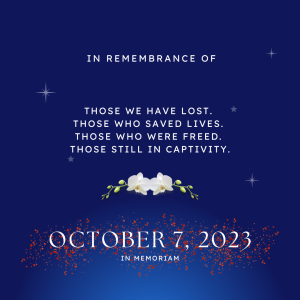
While each one of the more than 1,200 chilling accounts of the 10/7 victims who were massacred are equally important and must all be remembered, a select few are shared below.
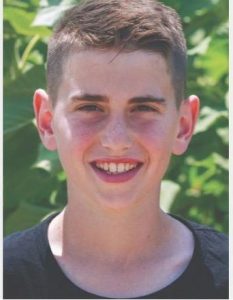
This is Ido Even. On 10/7, 14 year-old Ido was mercilessly killed when terrorists invaded his home and slaughtered him along with his brother and parents. His younger siblings, Tomer, 11 and Nir, 8, succeeded in fleeing and both escaped alive. The orphaned young boys are now without a big brother, without parents, without a home.
Click here to read more about Ido Even
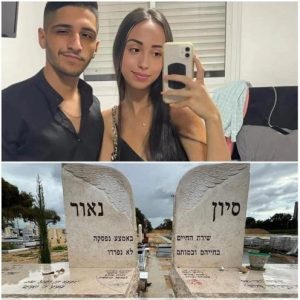
Naor Hasidim, 23, and his girlfriend Sivan Elkabets, 23, were murdered by Hamas terrorists in Kibbutz Kfar Aza on Oct. 7. The couple, who both grew up in Ashdod, were together since they were 16. They were killed inside Sivan’s apartment in Kibbutz Kfar Aza, where her family moved a few years before. Neighbors said the couple were likely pulled out of their bomb shelter by terrorists and murdered on the couch in their living room.
They were buried side-by-side in Ashdod several days apart, as their bodies were discovered separately. The Hebrew phrase “in life and in death, they did not part” was etched across their double headstone.
Click here to read more about Naor and Sivan
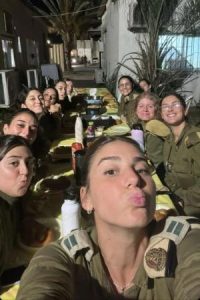
This photo was taken on the evening of Oct. 6 at the Nahal Oz outpost in Southern Israel. Shachaf Nissani, an Observation Sergeant, who was a week away from being released from military duty, celebrated the beginning of Shabbat with her friends, on what sadly became her last one. These young women had no inkling of the horrors that awaited them a few hours later, when dawn broke on Oct. 7.
Shachaf’s sister, Sapir, told Israeli public radio that she and her mother received a panicked call from Schachaf. Through the confusion and distressed background noise of girls screaming, she cried, “Mom, they’re shooting at us, there’s a terrorist invasion, I love you.” They continued texting for another hour until the connection was lost.
Nine out of the 11 young women in this photo were murdered – one was taken captive and one was kidnapped to Gaza and later rescued in an IDF military operation. Of the other soldiers on duty with her, five were kidnapped and remain in Hamas captivity and five were murdered. This one photo stands as a painful remnant of a gruesome massacre.
Click here to read more about Shachaf
![]()
Countless Arab Bedouin and Jewish civilian heroes risked their lives on Oct. 7 and saved countless hundreds that Hamas would have otherwise claimed as victims. Their brave, selfless acts and the lives they spared deserve to be remembered, re-told and celebrated. Here are a few of many of those heroes:
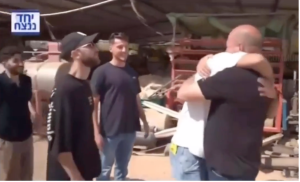
Photo: screenshot
A Bedouin, Yunis, heroically saved the lives of eight Jews who fled the Nova festival massacre and ran eight kilometers, ending up at his farm. He brought them food and water and once he heard terrorists approaching by motorcycle, he told them to run and hide. The terrorists demanded he open the gate and accused him of having Jews there. He lied to the terrorists and claimed to be alone, at the risk of his own safety, to protect the Jews in hiding – saving all their lives and establishing what will possibly be lifelong friendships with the survivors.
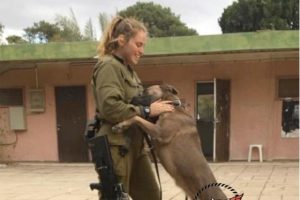
Inbal Liberman (Facebook)
The only woman on a 12-member Kibbutz Nir Am security team was heralded as a “female Rambo” for her heroic efforts to protect her family and community. Inbal Rabin-Liberman, 26, the head of the security squad who serves in an IDF combat unit, was woken at 6:30 a.m. by air raid sirens and then received text instructions from the army to wake up her security team. Something made her feel unsettled and she called the team to her office to pick up weapons.
The security squad’s agile thinking and ability to work together as a united team prevented deaths and injuries. They were able to hold terrorists back for hours until the army arrived to eliminate them. Miraculously, no one on the kibbutz security team was killed or injured in the 10/7 attack and all of the members of the kibbutz were safe because of the team’s heroism, teamwork, trust in each other and unshakeable bravery.
Click here to read more about Inbal
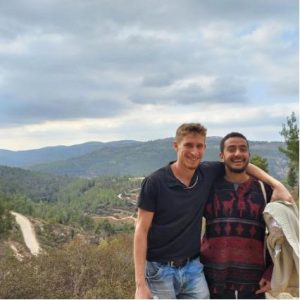
Aner Shapira and Hersh Goldberg-Polin (Photo: Facebook)
Aner Shapira, 22, who attended the Nova festival with his friend Hersh Goldberg-Polin, caught seven grenades in his hand in a roadside bomb shelter, then hurled them back at Hamas terrorists and saved the lives of 12 people. The eighth grenade he caught exploded and killed him. Unfortunately, months later, his friend Hersch Goldberg-Polin, an American Israeli who had been taken hostage on 10/7, was found in a Gaza tunnel – murdered by Hamas terrorists.
Click here to read more about Aner
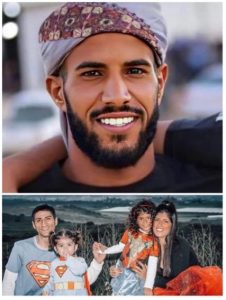
While driving to Sderot, Southern Israel, from a nearby Arab Bedouin village to visit his brothers who worked as security guards, Amer Abu Sabila met the Swissa family on the road. A few moments before he arrived, terrorists had shot the father, Dolev. His wife, Odaya, stayed in the car with her mortally wounded husband and young daughters, screaming for help. Amer, witnessing their desperation, got into Odaya’s car and began driving to the local police station. Hamas terrorists – who had taken control of the Sderot police station – ambushed and repeatedly shot both Amer and Odaya, as the little girls – age 3 and 6 – were quietly hiding on the floor of the car. A passing security guard later found and rescued the two little girls, who were miraculously unharmed. Both parents succumbed to their wounds, leaving them orphans. Amer could have saved his own life and returned home to his wife and children, but instead sacrificed his life in a selfless act of heroism.
Click here to read more about Amer
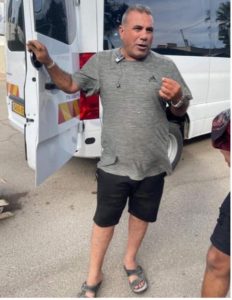
“I would never wish on anyone to see what I saw. This is trauma for my whole life. When I sit alone and recollect, I can’t help the tears.” Youssef Ziadna, a Bedouin bus driver, told the Jewish Telegraphic Agency after he rescued 30 people from the festival. He was on his way to pick up the passengers he had taken to the festival after receiving a distress call at 6 a.m. from Hadar, an Israeli, to pick up the nine of them. Youssef assumed it was because of incoming rocket fire from Gaza, so he raced to his bus. He arrived at the festival to find an inferno of bodies, blood and bullets firing from all directions. “I told them to bring as many as possible,” he recalled about packing more than two dozen people into his van. Youssef dodged a barrage of bullet fire to finally carry them to safety.
Click here to read more about Youssef
![]()
Of the eight total hostages freed by IDF missions, the four who were rescued from Hamas captivity in Gaza in June 2024 revealed a dark inside look at what Israel’s hostages have suffered and continue to face under Hamas brutality since their 10/7 kidnapping. The inhumane treatment included various forms of physical, emotional, psychological and even religious abuse. Some suffered from Stockholm syndrome. They endured a lack of water, no exposure to sunlight for months, and severe starvation. Reports of daily abuse in captivity include brainwashing, physical torture and ‘punishments’ including being beaten hourly, covered in blankets during the hottest time of the day and being threatened with murder.
One hostage was so brainwashed that when the IDF arrived to rescue him, he thought they had come to kill him. The three male hostages were secretly held hostage for six months by a prominent Gaza doctor and his family helping Hamas without even their neighbors’ knowledge. When Noa was allowed outside, she was disguised as an Arab woman. She was exploited as a servant for the family who held her captive. The Jewish male hostages were forced to read from the Quran and pray as Muslims daily.
Proving that hostage taking and abuse is part of a long-standing pattern of terrorist brutality, a 21-year old Yazidi woman, who was captured by ISIS in Iraq at age 10 and trafficked to different locations across several countries, ended up in Gaza where she was recently rescued by a successful joint operation between Israel, the U.S. and other countries.
![]()
Even after negotiations in November 2023, which brought a hostage release in exchange for imprisoned terrorist criminals and a temporary ceasefire in Gaza, and after successful and heroic IDF operations to rescue hostages, nearly 100 hostages are still being held captive – 12 months after their abduction on 10/7.
Click here to view this PDF of hostages with their names and ages
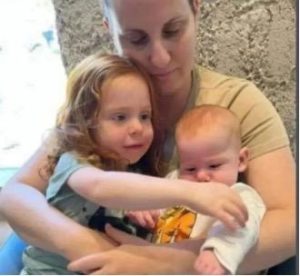
The Bibas family, still hostage in Gaza
Of those hostages still held hostage in Gaza, seven are American citizens. Their families, like those in Israel, are campaigning daily not only for their release but for the world to not forget them.
The American Jewish community has felt the shockwaves from 10/7 and been affected daily by both the trauma experienced by their loved ones in Israel and the unprecedented tidal wave of antisemitism that has swept the nation, and much of the world, since the massacre. ADL’s Jonathan Greenblatt remarked that “The lid to the sewers is off, and Jewish communities all across the country are being inundated with hate.” The rise of blatant hatred has made American Jews feel unsafe in schools, synagogues, university campuses and even on sidewalks – compelling many to hide their Jewish identity for fear of harassment or attack. From the use of antisemitic tropes that have blamed Jews for the world’s woes, to harassment, violence and bomb threats to synagogues and Jewish organizations, many Jews simply do not feel safe in the U.S. anymore.
According to the FBI’s federal hate crime stats, threats to Jews in the U.S. far exceed any other category of crimes based on religion. “The Jewish community is uniquely – uniquely – targeted by pretty much every terrorist organization across the spectrum,” said FBI Director Christopher Wray in testimony before Congress shortly after the Oct. 7 attack. “And when you look at a group that makes up 2.4%, roughly, of the American population, it should be jarring to everyone that that same population accounts for something like 60% of all religious-based hate crimes,” cited Wray.
![]()

![]()
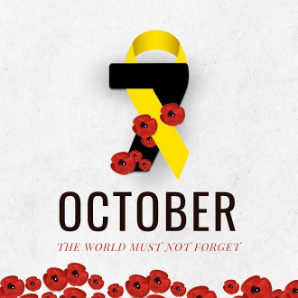
To commemorate the events of October 7th, the American Zionist Movement has launched a social media campaign to honor the memory of those killed on that day and throughout the war. Below are social media graphics you can use in October through the Hebrew anniversary of 10.7.2023 marked in Israel this year on 25 Tishrei (October 27th). The campaign is centered around a powerful graphic featuring: the number 7, the yellow hostage ribbon, & the Calanit, Israel’s national flower that has stood as a symbol of resilience since October 7th. Through a shared digital presence, we can amplify the message of unity and hope during this difficult time of remembrance.
Click here to learn more about the campaign.
Click here for all media files and step-by-step sharing instructions.
![]()

A. Remember and re-tell the stories of 10/7
Much like Holocaust deniers who whitewash history and claim that the Holocaust was a fabricated lie, those who hate Jews and Israel have worked tirelessly to ignore or downright deny that the atrocities of Oct. 7 ever happened. The accurate facts about the war, the heroic stories, survival miracles, the lives lost and the legacies left behind must never fall into the forgotten cracks of history. By remembering and re-telling their stories, celebrating their heroism and keeping their memories alive, we help to turn moments of pain into lifetimes of gratitude and remembrance.
B. Commemorate 10/7 in a meaningful way
The tragic events of 10/7 had a worldwide impact on the Jewish community and all of the supporters, friends and allies of Jews and Israel. Consider ways you can commemorate 10/7 that are meaningful to you. Here are some resources to help:
C. Watch, attend or volunteer at commemorative 10/7 events
![]()

Commemorations
Denial
Recent News:
![]()
In light of the surge of current relevant news, please subscribe to our Daily News Brief, a digest of critical news headlines curated from thousands of media addressing issues that affect the Jewish world.
![]()

This content is developed by The Focus Project in partnership with MERCAZ USA. The Focus Project distributes weekly news and talking points on timely issues concerning Israel and the Jewish people, including antisemitism, anti-Zionism and the delegitimization of Israel. It represents a consensus view across a spectrum of major American Jewish organizations. MERCAZ USA recognizes and respects the diversity of views on these issues among its readers and the community at large.
![]()